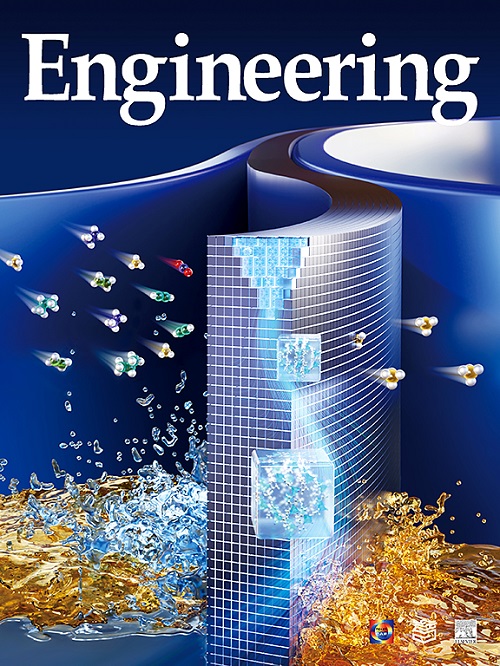Bacteria-Photocatalyst Biohybrid System for Sustainable Ammonium Production
IF 11.6
1区 工程技术
Q1 ENGINEERING, MULTIDISCIPLINARY
引用次数: 0
Abstract
Although the Haber–Bosch process supports the growth of modern agriculture with abundant ammonia and fertilizer production, substantial energy consumption and enormous greenhouse emissions demand an alternative and sustainable approach. Here, we report a novel approach that combines the non-photosynthetic bacterium Shewanella oneidensis MR-1 (S. oneidensis MR-1) with cadmium sulfide (CdS) nanoparticles (NPs) to enable the photosynthesis of ammonium (NH4+) from nitrate (NO3−) using photoexcited electrons as donors. The NO3− reduction efficiency reached almost 100%, with an NH4+ production selectivity of over 90%. The maximum instantaneous quantum efficiency was 3.01% under light irradiation. The reverse metal-reducing (Mtr) pathway is responsible for the transfer of photoexcited electrons to intracellular compartments. Parallel reaction monitoring analysis illustrated that NO3− to NH4+ was produced via the dissimilatory nitrate reduction to ammonium (DNRA) pathway in S. oneidensis MR-1. This study provides a facile strategy for light-driven ambient NH4+ synthesis and solar-to-chemical conversion.

可持续生产铵的细菌-光催化剂生物杂交系统
尽管Haber-Bosch工艺以丰富的氨和化肥生产支持现代农业的发展,但大量的能源消耗和巨大的温室气体排放需要一种替代的可持续方法。在这里,我们报告了一种新的方法,将非光合细菌希瓦氏菌MR-1 (S. oneidensis MR-1)与硫化镉(CdS)纳米粒子(NPs)结合,利用光激发电子作为供体,使硝酸盐(NO3−)中的铵(NH4+)进行光合作用。NO3−的还原效率接近100%,NH4+的选择性达到90%以上。光照射下瞬时量子效率最高为3.01%。反向金属还原(Mtr)途径负责光激发电子向细胞内区室的转移。平行反应监测分析表明,在s.o oneidensis MR-1中,NO3−to NH4+是通过异化硝酸还原到铵(DNRA)途径产生的。该研究为光驱动环境NH4+合成和太阳能-化学转化提供了一种简单的策略。
本文章由计算机程序翻译,如有差异,请以英文原文为准。
求助全文
约1分钟内获得全文
求助全文
来源期刊

Engineering
Environmental Science-Environmental Engineering
自引率
1.60%
发文量
335
审稿时长
35 days
期刊介绍:
Engineering, an international open-access journal initiated by the Chinese Academy of Engineering (CAE) in 2015, serves as a distinguished platform for disseminating cutting-edge advancements in engineering R&D, sharing major research outputs, and highlighting key achievements worldwide. The journal's objectives encompass reporting progress in engineering science, fostering discussions on hot topics, addressing areas of interest, challenges, and prospects in engineering development, while considering human and environmental well-being and ethics in engineering. It aims to inspire breakthroughs and innovations with profound economic and social significance, propelling them to advanced international standards and transforming them into a new productive force. Ultimately, this endeavor seeks to bring about positive changes globally, benefit humanity, and shape a new future.
 求助内容:
求助内容: 应助结果提醒方式:
应助结果提醒方式:


